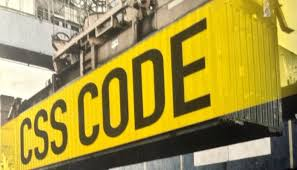
Background
The accelerations acting on a ship in a seaway result from a combination of longitudinal, vertical and predominantly transverse motions. The forces generated by these accelerations leading to the majority of securing problems. The danger arising from these forces should be dealt with by taking actions both to ensure proper stowage and securing of cargoes on board and to reduce the amplitude and frequency of ship motions.
In this regard, the Assembly accepted the Code of Safe Practice for Cargo Stowage & Securing (CSS Code) in November 1991 by resolution A.714(17). The Assembly suggested that Governments should apply the Code at the earliest possible opportunity & requested the Maritime Safety Committee to keep it under review and amend it as necessary. In this regard, the CSS Code has undergone successive changes through the years as follows: MSC/Circ.664; MSC/Circ.691; MSC/Circ.740; MSC/Circ.812; MSC/Circ.1026; MSC.1/Circ.1352; MSC.1/Circ.1352/Rev.1.
Purpose
The motive of this CSS Code is to provide an international level to promote the safe stowage & securing of cargoes by:
- drawing the attention of shipowners & ship operators to the need to assure that the ship is suitable for its intended purpose;
- providing advice to assure that the ship is supplied with proper cargo securing means;
- providing general advice regarding the proper stowage & securing of cargoes to minimize the risks to the ship & personnel;
- providing specific advice on those cargoes which are known to create difficulties and hazards with regard to their stowage and securing;
- advising on measures which may be taken in heavy sea conditions; &
- advising on measures which may be taken to remedy the effects of cargo shifting.
- In providing such ideas, it should be keep in mind that the Master is accountable for the safe conduct of the voyage and the safety of the ship, its crew and cargo.
General Principles
- All cargoes should be stowed and secured in such a way that the ship and persons on board are not put at risk.
- The safe stowage & securing of cargoes depend on proper planning, execution & supervision.
- Personnel engaged to tasks of cargo stowage & securing should be properly qualified & experienced.
- Personnel who is planning & managing the stowage & securing of the cargo should have a sound practical knowledge of the application & content of the Cargo Securing Manual.
- In all cases, improper stowage & securing of cargo will be potentially dangerous to the securing of other cargoes & to the ships itself.
- Decisions taken for the plan of the stowage & securing cargo should be based on the most severe weather conditions which may be expected by experience for the intended voyage.
- Ship managing decisions taken by the master, generally in bad weather conditions, should take into consideration the type & stowage position of the cargo & the securing arrangements.



